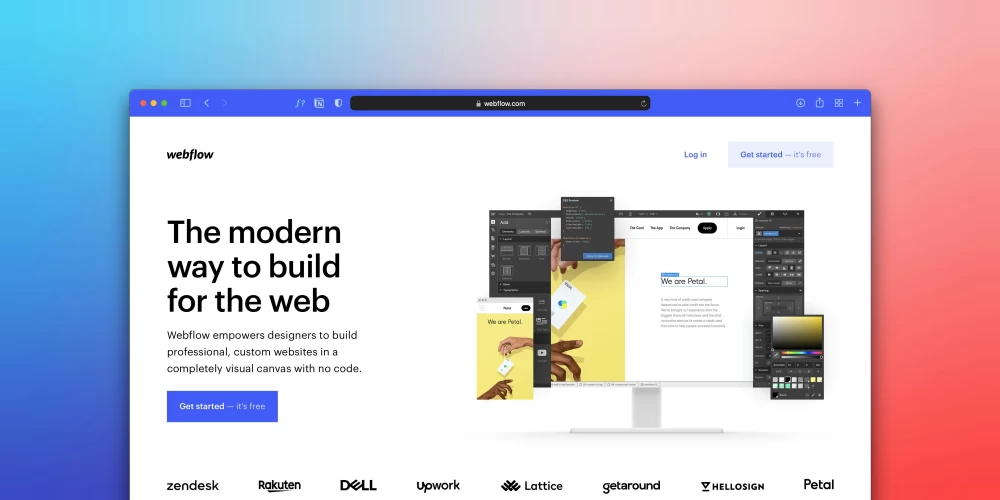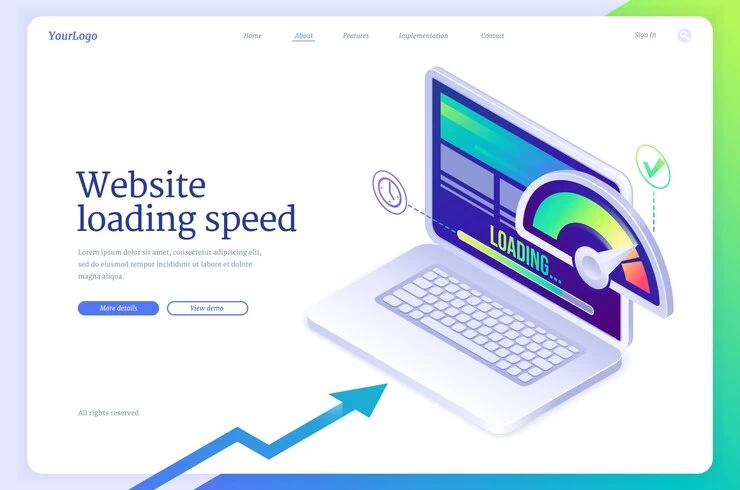Table of Contents
- 1. Set Clear Goals:
- 2. Create a Productive Workspace:
- 3. Time Management Techniques:
- 4. Utilize Productivity Tools:
- 5. Establish Effective Communication:
- 6. Automate Repetitive Tasks:
- 7. Outsource Non-Core Activities:
- 8. Prioritize Self-Care:
- 9. Create Templates and Workflows:
- 10. Regularly Review and Improve:
- 11. Set Boundaries:
As a freelancer, maximizing productivity and efficiency is crucial to achieving success in your endeavors. Adopting effective workflow optimization strategies can significantly improve your work process, allowing you to deliver better results while maintaining a healthy work-life balance. Here are 12 practical tips to streamline your freelance workflow:
1. Set Clear Goals:
Freelancer workflow optimisation starts with setting clear goals. Goals help you focus, organise, and complete work. Goal-setting advice: Be Clear: Declare your goals. Instead of "increase productivity," specify specific targets like "complete three client projects by the end of the week."
To track your development, make them measurable. This lets you evaluate your progress and make adjustments. "Acquire five new clients in the next month" is quantifiable.
While ambition is important, set realistic goals. Unrealistic goals can demoralise. Set goals based on workload, resources, and talents. Goals should have deadlines. Timelines build urgency and help you prioritise work. The goal could be "launch the website redesign by the end of next month."
Break Down Larger Goals:
Break large projects or long-term goals into smaller milestones. This step-by-step technique simplifies complex tasks and ensures continuous progress.
Write Them Down:Keep your goals handy. Writing them down solidifies your commitment and keeps you focused.
Goals should match your career vision and values. Work is more fulfilling when your goals match your passion and purpose. Review and Adjust:
Assess your goals regularly. Celebrate successes and adapt to new information. Be Flexible:
Goals are important, but be flexible. Be flexible when freelancing since unexpected obstacles and possibilities arise. Seek Feedback and Support:
Tell trusted friends and mentors your goals. They may offer advice or keep you on track. Visualise Success:
Picture yourself succeeding. Visualising success can motivate and keep you encouraged. Celebrate Goals:
Celebrate your successes. Acknowledging your victories boosts your confidence and motivates you to try again. You may succeed in freelancing by creating clear and relevant goals. They help you prioritise, stay motivated, and enjoy your work.
2. Create a Productive Workspace:
Freelancers need productive workspaces to maximise productivity and creativity. Organisation and inspiration can boost focus, productivity, and well-being. Workspace productivity tips:
Choose the Right Location: Choose a peaceful and relatively secluded spot in your home or a dedicated workspace outside your home if available. Keep the space focused on work.
Natural Light and Ventilation: Work near a window for natural light. Maintaining comfort and energy requires adequate ventilation. Ergonomic Setup: Buy an ergonomic chair and desk to improve posture and decrease strain. To avoid discomfort and injury, place your screen, keyboard, and mouse neutrally.
Regularly clean up your workspace. To focus, clean your workstation and get rid of clutter. Personalise your workstation to inspire and motivate you. This could be artwork, plants, or motivating quotes.
Technology and Equipment:
Have the right tools to do your job. This comprises a trustworthy computer, high-speed internet, essential software, and freelancing work-specific equipment.
Eliminate Distractions:
Find and eliminate workplace distractions. Disable phone notifications and set up a workstation away from traffic.
Inspiring Ambiance:
Consider your workspace's ambiance. Play instrumental or background music to focus and inspire. To create a nice workplace, use aromatherapy.
Organisational Tools:
Store essentials in organisers, shelves, or drawers. This lets you find what you need without stopping work.
Colour Psychology:
Pick colours that boost productivity. While preferences vary, blue, green, or neutral tones are believed to relax and inspire.
If your workspace allows, create zones for different activities. Have a room for brainstorming, focused work, and breaks or personal calls. Maintain your workspace. Cleanliness and organisation boost productivity and professional pride. Adjust these guidelines to suit your work style and interests. As a freelancer, a functional and inspiring office will boost productivity, focus, and job happiness.
3. Time Management Techniques:
Freelancers need good time management to manage their task and have a good work-life balance. Popular time management practises that boost productivity:
Pomodoro Method: Work for 25 minutes, then take a 5-minute rest. After four intervals, take a 15–30-minute break. This method reduces burnout and maintains attention.
Time Blocking: Set aside time for each task or project. Make a timetable for project work, email responses, breaks, and personal concerns.
The Two-Minute Rule: Finish any work that takes less than two minutes. This avoids tiny jobs stacking up and becoming distractions.
Eisenhower Matrix: Prioritise urgent and important tasks. Sort jobs into four quadrants: urgent and important, important but not urgent, urgent but not important, and neither.
Eat That Frog: Brian Tracy's book suggests starting the day with your hardest or most important work. "Eating the frog" early gives your day momentum.
Time auditing: Record your daily time usage. This audit finds time-wasting, inefficient, and improvement opportunities.
The Pareto Principle: Find the 20% of tasks that produce 80% of your results. Optimise productivity with these high-impact tasks.
Batching comparable Tasks: Complete comparable tasks sequentially. To reduce context-switching, answer emails at set times.
Deadline-driven Work: Give yourself deadlines even if the real deadline is later. Urgency can keep you focused and productive.
Prioritise tasks by deadline, priority, and complexity using a task management system or to-do list. Prioritise important tasks to avoid last-minute rushes.
Avoid multitasking: Focus on one task at a time. Multitasking reduces productivity and increases errors.Know Your Limits: Don't overcommit. Refusing more work helps you manage your time. Limit Workplace Distractions: Reduce social media, notifications, and noise. Set time limitations for time-consuming chores to stay on track. Review and alter: Review and alter your time management methods to find what works best for you. Find a time management method that fits your work style and boosts productivity. These methods can boost your time management abilities and make your freelancing career more balanced and satisfying.
4. Utilize Productivity Tools:
Freelancers can save time and keep organised with productivity tools. Some productivity tools for freelancers: Task Managers:
Trello: A visual project management platform that organises tasks and collaborates with clients or teammates using boards, lists, and cards.
Asana: A flexible task and project management tool for tracking, setting deadlines, and team communication.
Time-Tracking Apps:
Toggl: An easy-to-use time tracking tool for projects and activities.
Clockify: A free time tracking tool with advanced reporting for time management analysis.
Notes and Documentation:
Evernote: Captures ideas, creates to-do lists, and organises information across devices. Google Workspace: Google Docs, Sheets, and Drive for document creation and storage.
Collaboration & Communication:
Slack: Real-time team communications and file sharing platform.
Microsoft Teams: A Microsoft 365-integrated workspace for chat, video, and file sharing.
Password managers
LastPass: Stores and autofills login credentials for several accounts. 1Password: Another popular password organiser with robust encryption and secure document storage. ClickUp: A Gantt chart-enabled project management tool. Monday.com: A configurable project tracking application with Gantt charts. Social media schedulers: Hootsuite: A social media management application for scheduling posts, tracking engagement, and analysing performance across platforms.
Buffer: A simple social media scheduler.
Automation Tools Zapier: Automate tedious chores and save time with this automation solution. Integromat: Like Zapier, this technology automates workflows and data synchronisation. To pick the greatest productivity tool for your needs and budget, compare features and prices. These tools improve freelancer efficiency, collaboration, and organisation, increasing productivity and job output.
5. Establish Effective Communication:
Freelancers need good communication to work well with clients and partners and meet expectations. Effective communication tips: Active Listening: Listen to clients and teammates. To show you respect their input, listen to their wants, concerns, and feedback. Clarify Expectations: Discuss project scope, deliverables, timelines, and communication methods with clients at the start. This prevents confusion.
Respond to emails, messages, and queries quickly. Responding displays professionalism and hard ethic. Choose the Right Communication Channels: Use channels your clients and collaborators prefer. Email, Slack, or Zoom are options. Be Professional and Courteous: Always speak and write professionally. Even in difficult times, talk respectfully. Regular Check-Ins: Update clients on project progress and answer queries via regular check-ins.
After projects, ask clients for comments to assess your performance and discover areas for improvement. Transparency: Communicate project issues and delays. Early warning and solutions are key. Visual Aids: Charts, graphs, and mockups can help explain complicated ideas. Summarise Key Points: After significant meetings, email attendees a summary of key decisions, action items, and next steps. Avoid Jargon: If your clients are unfamiliar with industry jargon, use simple language to communicate. Respect Time Zones and Availability: Consider clients' working hours and availability when dealing with them. Avoid scheduling conflicts by adapting your communication.
Handle Disagreements Professionally: Instead of arguing, try to solve problems. Find shared interests and solutions. Follow-Up on Agreements: If a client requests adjustments or deliverables, follow through and provide. Building rapport with clients and partners develops trust and open communication. Be interested in their goals.
6. Automate Repetitive Tasks:
Freelancers can boost productivity by automating repetitive chores. Automation and processes let you focus on high-value tasks and boost productivity. Automate these frequent repetitious tasks: Email Responses: Use email templates to swiftly respond to client questions. Accounting software or invoicing systems can automate regular invoices and payment reminders. Social media posting: Use scheduling tools to schedule and automate postings across platforms for a regular online presence. Data Entry and Form Filling: Use browser extensions or software to auto-fill forms to save time. File Organisation: Use file management software to automatically sort and categorise files for easy retrieval. Appointment Scheduling: Allow clients to plan appointments based on your availability to avoid back-and-forth communication. Content Distribution: Use RSS feed technologies or marketing automation software to distribute blog posts or content updates to several platforms or email lists.
Lead generating: Automate manual prospecting by using lead generating technologies to find possible clients or projects. Social Media Monitoring: Use social listening technologies to track mentions, comments, and brand interactions without continual monitoring. Task Reminders: Use task management or productivity tools to set reminders and notifications for projects and deadlines. Data Backup and Sync: Automatically sync and backup essential files and documents with cloud storage and backup services. Customer Onboarding: Send new clients welcome emails or automated onboarding sequences with important information. Project Status Updates: Use project management technologies to automatically notify clients on project progress. Follow-Up Emails: Send automated emails after projects to request feedback or ask for further work. Tracking unpaid invoices with automated reminders helps you manage cash flow.
7. Outsource Non-Core Activities:
Freelancers can save time and focus on their expertise and business growth by outsourcing non-core duties. Freelancers can boost productivity, efficiency, and stress by outsourcing non-essential tasks. Effectively outsourcing non-core activities: Start by listing your non-core tasks. Administrative, bookkeeping, social media, graphic design, and website maintenance are examples. Evaluate Outsourcing Options: Consider virtual assistants, freelancers that specialise in the job, or freelance markets to find skilled specialists.
Define Clear Requirements: Set clear scope, objectives, and deliverables for outsourced work. This guarantees that you and the outsourcer understand the project.
Establish Effective Communication Channels: Communicate with the outsourced workforce regularly. Collaboration and project success require open communication.
Review Portfolios and References: Before hiring freelancers or agencies, check their portfolios, references, and customer evaluations to be sure they have the skills and experience to deliver quality work.
Create SOPs: Outsource non-core work using explicit SOPs. SOPs help the outsourced workforce follow your standards.
Start with a Trial term: Start with a trial term for outsourced chores to evaluate compatibility and quality. Before commencing, agree on payment terms and methods with the outsourced team. Define rates, payment plans, and additional fees. Regularly check in with the outsourced staff to track progress, handle concerns, and provide comments. This ensures task completion and accountability. Protect Confidential Information: If non-core jobs include sensitive data, make sure you have contracts or agreements to protect it. Cost-Benefit: Compare outsourcing to internal non-core duties. Outsourcing costs money, but saving time and energy is worth it.8. Prioritize Self-Care:
Freelancers must prioritise self-care to stay well mentally, emotionally, and physically. Self-care can help freelancers live well: Boundaries: Separate work and personal life. Avoid burnout by scheduling tasks and not overworking. Take Regular Breaks: Take small breaks throughout the day to minimise mental tiredness. Stretch, walk, or do what you like. Sleep Well: Get enough sleep each night. Sleep is important for productivity and health.
Feed Your Body: Eat well-balanced meals. Caffeine and junk food deplete energy and focus. Regularly exercise. Exercise promotes physical health, mental clarity, and stress. Mindfulness & Meditation: Meditation and deep breathing can relieve stress and improve mental clarity. Hobbies and Interests: Spend time on things you enjoy. Creative or relaxing activities refresh the mind. Connect with friends, family, and industry peers. Networking offers assistance, new viewpoints, and commercial prospects. Limit screen time, especially during leisure time. Disconnect from screens.
9. Create Templates and Workflows:
Reusing templates and workflows can speed up and standardise your freelance work. Freelancer workflow templates: Project proposal template: An outline for pitching your services, project scope, schedule, and cost. Contract template: A standard contract with project details, deliverables, payment conditions, and service terms. Invoice template: A professional invoice template with branding, client data, project description, and payment information. Email templates:
Email templates for first client queries, project updates, and thanking collaborators. Onboarding checklist: A checklist for project onboarding, including obtaining requirements and establishing up communication channels. Content Production Process: A step-by-step method for planning, developing, editing, and publishing material for content marketing consistency and efficiency. 7. Posting Schedule: A social media calendar with content ideas and hashtags. Task Priority Matrix: A matrix that helps you focus on urgent and important tasks. Design Approval: A design project workflow that streamlines client approval. 10. Project Management Template: Trello or Asana with pre-defined boards and lists to track project stages and tasks. Social Media Dashboard: A spreadsheet or dashboard that tracks social media analytics performance over time. 12. Blog Outline Template:
A blog post template with headers, subheadings, and important points to organise your material. Content Reuse Workflow: A procedure for converting blog posts into movies or infographics. Newsletter Template: Email newsletter design template for branding and style consistency. 15. End-of-Project Evaluation Form: A project-end survey template to improve your services based on client feedback. Customise these templates and workflows for your freelance services and industry. To maximise productivity and client satisfaction, update and improve them often.
10. Regularly Review and Improve:
Maintaining efficiency, productivity, and quality requires assessing and refining your freelance process. Steps to review and enhance your freelance workflow: Reflect on past projects. Assess successes and shortcomings. Find improvement and learning opportunities. 2. Request Client Feedback: Request client feedback after each project. Use surveys or direct communication to assess customer satisfaction and seek ideas for improvements.
3. Analyse Metrics and Data: Examine work process and outcome metrics. Project completion, client happiness, and financial performance are examples. 4. Find Bottlenecks: Find workflow inefficiencies. These may be repetitive duties or areas of difficulty. 5. Prioritise Improvements: After reflection, feedback, and analysis, prioritise areas for improvement. Prioritise essential issues. 6. Try New Tools and Methods: Try new productivity tools and methods to improve your workflow. Try different methods and find what works best. 7. Update Templates and Workflows: Update templates and workflows to reflect business, industry, and customer changes. Maintain relevance and efficiency.
8. Develop your skills by taking classes, attending webinars, or reading industry magazines. Continuous learning lets you adjust to shifting needs. 9. Time Management Analysis: Track your time allocation periodically. Find out where you're wasting time. 10. Create SMART goals for your freelance business. Review progress and change strategies. 11. Collaborate and network with other freelancers and industry professionals. Share best practises and workflows. 12. Automate repetitious processes. Automation saves time and reduces errors. 13. Improve your client onboarding process to set clear expectations and build solid client connections from the start of each project. 14. Collect positive client testimonials and reviews to demonstrate your skills and develop reputation. These testimonies can also highlight your strengths. 15. Track industry trends and developments. Understanding market expectations can help you customise services and workflows to clients' changing needs.
11. Set Boundaries:
Setting boundaries is essential for a healthy work-life balance and preventing your freelancing career from taking over. Freelancers can set boundaries in several areas:
1. Working Hours: Set productive and convenient hours. Avoid burnout by keeping these hours.
2. Communicate response timeframes to clients and teammates. Set expectations by telling them when you'll respond.
3. Availability: Limit meetings, calls, and urgent demands. Be clear about your availability and personal time.
4. Weekends and Holidays: Work only in emergencies. Rest and recharge.
5. Maximum Workload: Determine the most tasks or clients you can handle without compromising quality.
6. Saying No: When your workload is full, say no to new initiatives. Politely decline overburdening opportunities.
7. Personal Space: Separate work and life with a real workplace. Having a workstation helps you swing between work and relaxation.
8. Social Media and Notifications: Limit your use and notifications during work hours. Reduce distractions to focus.
9. Prioritise family and friends. Work-life balance requires time for family and friends.
10. Prioritise self-care. Limit breaks, exercise, and healthy living.
11. Vacations and holidays: Take time off to relax. Notify clients of your absence and arrange coverage.
12. Emergency Contact: Provide a contact method for actual situations while you're unavailable. Thus, you can be reached in emergencies even outside of work.
13. Deadlines: Give clients realistic project deadlines. Don't overpromise.
14. Invoice and Payment Terms: Make sure clients understand your invoice and payment terms to ensure prompt payment.
15. Self-improvement Time: Learn new skills, attend workshops, and read industry-related information.
Improve your efficiency, output, and general pleasure with your freelancing work by implementing these workflow optimisation tactics. If you want to make it in the ever-changing world of freelancing, you need to constantly challenge yourself to get better.


















